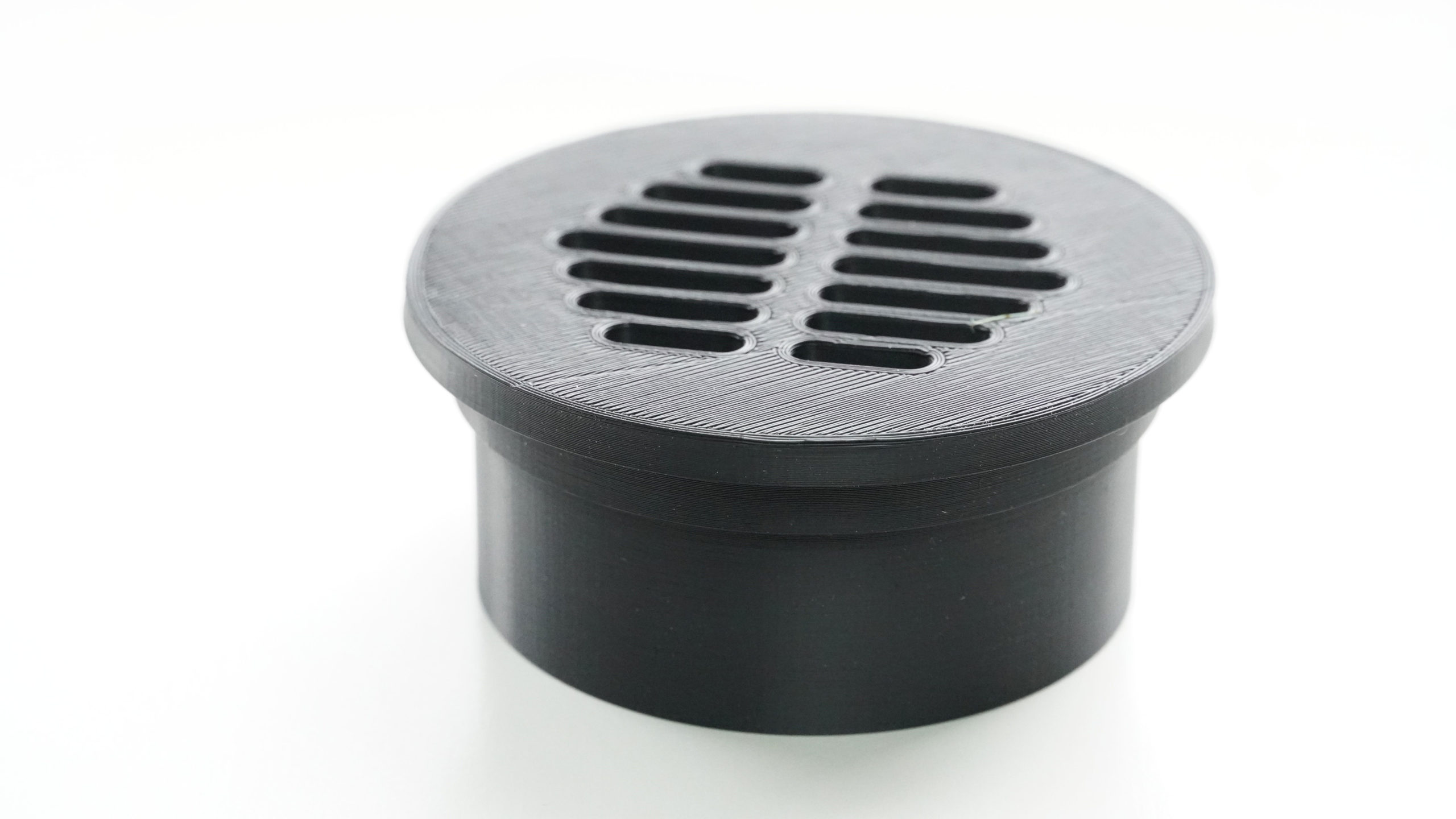Do you have any further questions?
Call us or send us an email:
- +49 (0)9401 5399470
- info@3dbavaria.com

Max. building space:
500 x 400 x 500 mm
Tolerances:
± 0,5% (min. ± 0,3 mm)
Costs:
€ € €
Delivery time:
from 1 working day
ASA has very similar material properties to ABS. The big difference here is the higher weather resistance of ASA. At the same time, ASA yellows less under the influence of UV, is just as resistant to oils and greases, and also shows the same temperature resistance as ABS. ASA is a rigid, dimensionally stable, impact resistant and resilient material that also delivers high quality surfaces.
Look and feel:
With the FDM process, the individual print layers (usually 0.1-0.3 mm), or process paths of the print nozzle, are clearly visible on the parts. In addition, support structures are often necessary for printing, which must be removed afterwards and can have an impact on the surface quality.
Technical documents:
| Test | Value | Method |
|---|---|---|
| Young's modulus (x-, y-axis) | 2379 ± 157 MPa | ISO 527, GB/T 1040 |
| Young's modulus (z-axis) | 1965 ± 136 MPa | ISO 527, GB/T 1040 |
| Tensile strength (x-, y-axis) | 43.8 ± 0.8 MPa | ISO 527, GB/T 1040 |
| Tensile strength (z-axis) | 32 ± 1.8 MPa | ISO 527, GB/T 1040 |
| Elongation at break (x-, y-axis) | 6.7 ± 0.6 % | ISO 527, GB/T 1040 |
| Elongation at break (z-axis) | 1.65 ± 0.2 % | ISO 527, GB/T 1040 |
| Bending strength (x-, y-axis) | 73.4 ± 2.1 MPa | ISO 178, GB/T 9341 |
| Bending modulus (x-, y-axis) | 3206 ± 108 | ISO 178, GB/T 9341 |
| Impact strength (x-, y-axis) | 10.3 ± 0.4 kJ/m2 | ISO 527, GB/T 1043 |
| Impact strength (z-axis) | 6.7 ± 1.4 kJ/m2 | ISO 527, GB/T 1043 |
| Vicat softening temperature | 105.3 °C | ISO 306, BT/T 1633 |
The comparatively inexpensive but extremely flexible FDM process impresses with a huge selection of materials as well as large installation spaces ( with us, for example, up to 1,000 x 500 x 500 mm).
ABS is the most widely used plastic in the world. It is characterized by a high level of heat resistance and very good post-processing options.
The PLA, made from renewable raw materials, is characterized by its high tensile strength. It is particularly suitable for prototypes and bulky parts.
This plastic combines the best properties of ABS and PLA. It is tougher than ABS, more heat resistant than PLA, UV stable and resistant to many chemicals.
Polycarbonate (PC) is an extremely tough material. It has high temperature resistance, making it ideal for technical enclosures, for example.
The carbon fiber-reinforced PA6/66 is highly resistant to external influences and particularly good for robust parts that have to meet higher mechanical requirements.
With an elongation of up to 480%, high chemical resistance as well as heat resistance up to 140°C, the material is suitable for industrial applications.
ESD ABS is ideal for critical applications that require a high level of protection against electrostatic discharges, such as electrical enclosures or packaging.
This material is a real alternative to conventional materials used for technical applications and is both food safe and compostable.